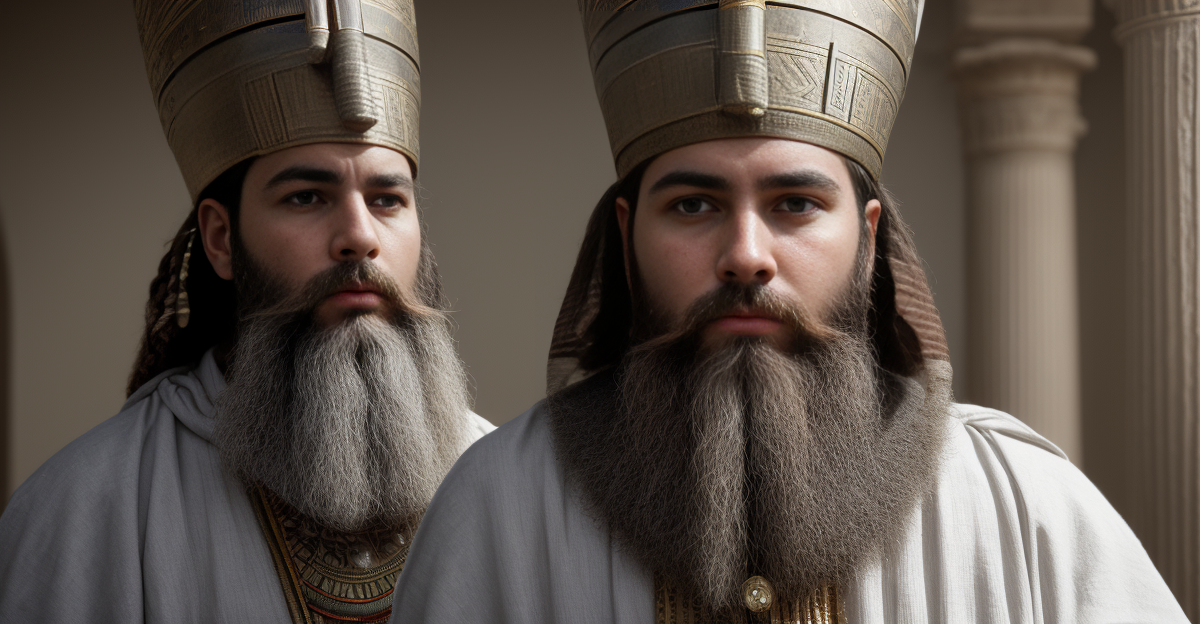
Did Hatshepsut's beard REALLY fool ancient Egyptians? Probably not! This video explores the fascinat
Ever felt like you had to play a role to get ahead? Hit that like button if you can relate! Now, imagine being Hatshepsut, a *female* pharaoh in ancient Egypt. She challenged the status quo (and sported a beard!), but was it a calculated act of deception or the ultimate power play? Let’s unearth the truth!
Hatshepsut’s Beard: Power Move or Ancient Egyptian Photoshop?
Hatshepsut. The name evokes images of a powerful and enigmatic ruler. But it’s the *beard* that truly captivates. This wasn’t a mere fashion choice; it was a bold declaration of authority in a world dominated by men.
Did it genuinely fool people into thinking she was male? Or was it a strategic move to solidify her reign?
The Societal Context of Female Rule in Ancient Egypt
The Rarity of Female Pharaohs
Ancient Egypt, despite its advancements, remained a patriarchal society. The pharaoh was traditionally a male figure, embodying strength, leadership, and a divine connection. Female rulers were… a rarity.
Imagine spotting a unicorn riding a skateboard – impressive, but certainly not commonplace.
Limited Precedents
Okay, Hatshepsut wasn’t completely without precedent. Other female rulers, like Sobekneferu, existed before her. However, their reigns were often brief and viewed as exceptions.
There wasn’t a readily available “How to Rule as a Woman Pharaoh” guidebook.
The Importance of Ma’at
Ma’at. Commit this word to memory. It’s essential. It represented cosmic order, the universe’s delicate balance. In ancient Egyptian belief, the pharaoh was responsible for maintaining Ma’at.
Some believed a female ruler could disrupt this balance. It’s akin to tampering with the universe’s thermostat – a definite no-no!
Therefore, Hatshepsut had to convince everyone that she was not only capable of ruling but also perfectly equipped to uphold Ma’at.
Analyzing Hatshepsut’s Masculine Imagery: Beard and Beyond
The Significance of the Beard
The beard. Ah, the beard! It was more than just facial hair. It was a *symbol* of pharaonic power, representing maturity, authority, and a direct connection to the gods.
Consider it the ancient Egyptian equivalent of a power suit… but with significantly more hair.
Other Masculine Representations
However, it wasn’t solely about the beard. Hatshepsut fully embraced masculine imagery.
Statues and inscriptions portrayed her in male attire, with a more muscular build, and using male titles such as “King” and “Son of Ra. ” It was a comprehensive visual rebranding, designed to eliminate any doubt regarding her authority.
Gradual Adoption of Masculine Features
Intriguingly, Hatshepsut didn’t immediately sport the full beard. Early depictions portrayed her as a woman, albeit a powerful one.
Over time, her image gradually evolved, becoming increasingly masculine. This suggests a deliberate and strategic approach to consolidating her power.
Power Play or Deception: Intentions Behind the Image
Legitimizing Her Rule
The most plausible explanation for Hatshepsut’s masculine imagery is that it was a straightforward power play.
She employed familiar symbols of authority to legitimize her rule in a society that wasn’t entirely prepared for a female pharaoh.
It was a way of declaring, “Yes, I am a woman, but I am also the PHARAOH, and I possess all the necessary qualifications (including the beard) to prove it!
Appealing to Tradition
By embracing traditional symbols of power, Hatshepsut also appealed to the more conservative factions within Egyptian society, particularly the influential priestly class.
It was a means of reassuring them that she wouldn’t disrupt the established order. It’s akin to saying, “Rest assured, I won’t discard all the ancient traditions. I’ll simply… wear them in a slightly different manner.
Not Necessarily Deception
Here’s a critical point: it’s unlikely that Hatshepsut was attempting to literally “fool” anyone into believing she was male. Everyone was aware of her gender.
The beard served as a visual statement, a symbol of her role as pharaoh. It was about projecting power and authority, not about disguising herself as someone she wasn’t.
The Legacy and Impact of Hatshepsut’s Reign
Successful Reign
Despite initial skepticism, Hatshepsut proved to be an exceptionally successful ruler. Egypt flourished under her leadership.
She commissioned ambitious architectural projects, including the magnificent temple complex at Deir el-Bahri. She also revitalized trade routes, bringing wealth and resources to Egypt.
Thutmose III’s Damnatio Memoriae
Following Hatshepsut’s death, her successor, Thutmose III, attempted to erase her from history. This “damnatio memoriae” involved defacing her statues and removing her name from inscriptions.
The motivations behind this act are debated, but it’s likely that Thutmose III sought to solidify his own claim to the throne and eliminate any potential threats to his authority.
Long-Term Impact on Perceptions of Female Rulers
Did Hatshepsut’s example pave the way for future female rulers? It’s difficult to say definitively.
While other powerful women existed in Egyptian history (such as Cleopatra), Hatshepsut’s reign remains a unique and compelling case study in gender, power, and political maneuvering.
So, there you have it. Hatshepsut’s beard wasn’t about deception; it was about solidifying her power in a patriarchal society.
She leveraged established symbols to her advantage, proving that a woman could be just as capable as a man when it came to governing Egypt. What are YOUR thoughts?
If you enjoyed this deep dive into ancient Egypt, hit that subscribe button for more historical rabbit holes! And don’t forget to share this with your history-loving friends!
Enjoyed this? Check out our YouTube channel for video versions!
Enjoyed this? Check out our YouTube channel for video versions!



